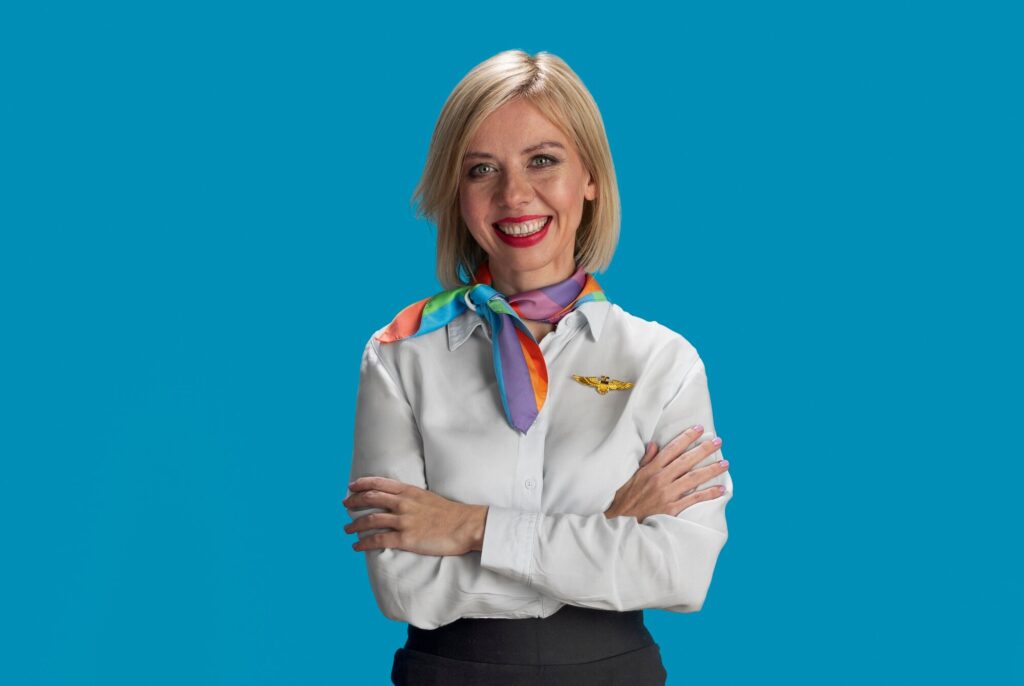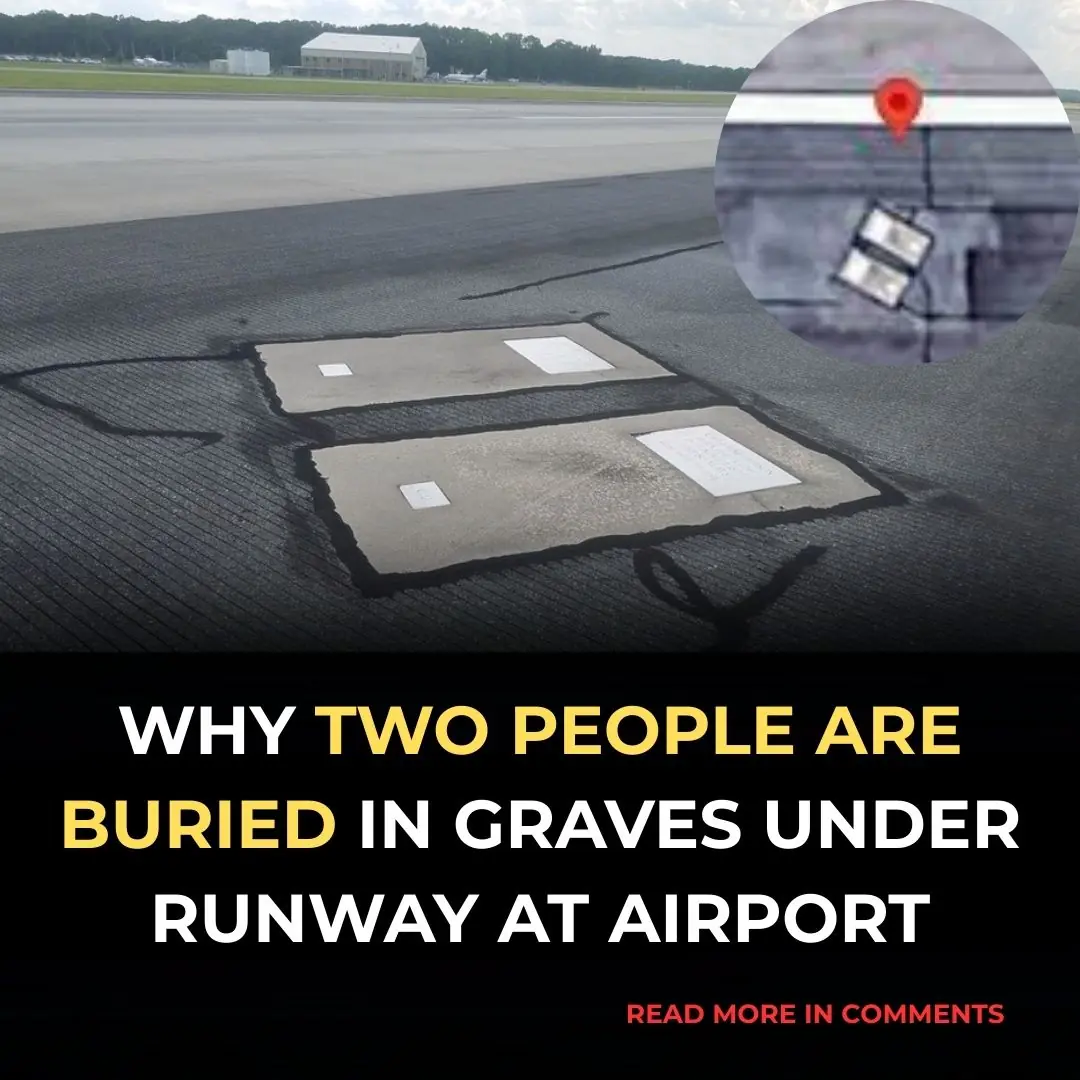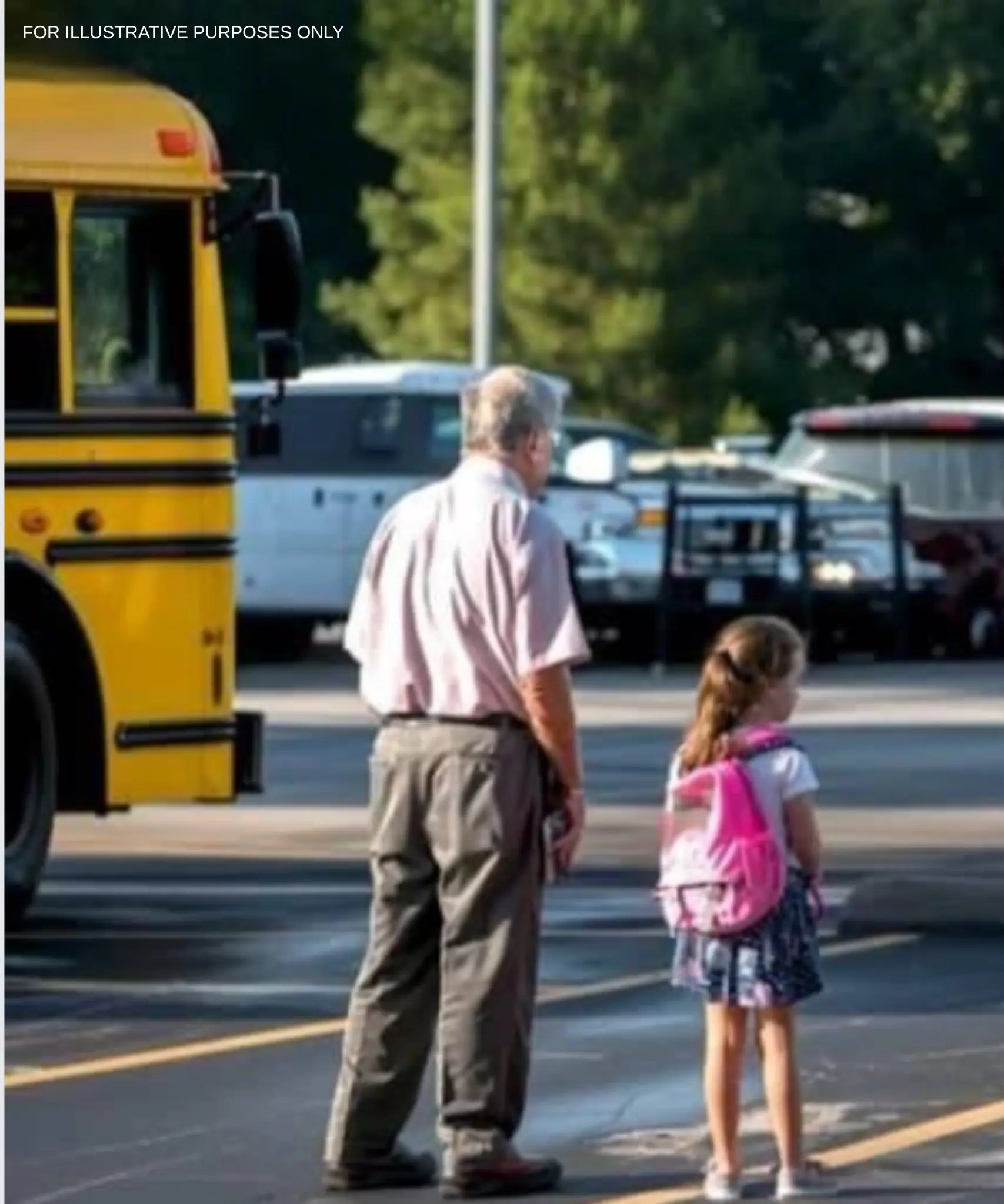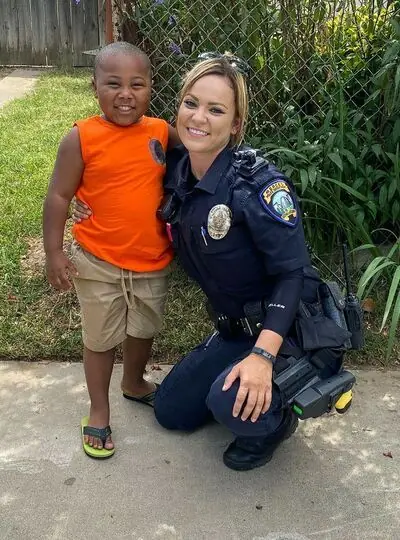
Here’s Why Cabin Crew Sits On Their Hands During Take Off and Landing
Flight attendants’ responsibilities in the aviation industry go well beyond providing drinks and making sure passengers are comfortable.
They are qualified experts in charge of making sure that everyone on board is safe and healthy.
Among the numerous processes and rules they follow, one seemingly odd habit sticks out: the bracing position the cabin crew adopts during takeoff and landing.
The Bracing Position Explained by a Flight Attendant

Passengers frequently become curious and speculate when they see flight attendants sitting on their hands and strapping up in their jump seats during landings. But in a widely shared TikTok video, Cebu Pacific flight attendant Henny Lim clarifies. This seemingly odd position has a purpose.
Source: Freepik
According to Lim, the bracing position entails a number of particular movements: securing seatbelts, sitting up straight, resting hands on thighs with thumbs tucked in, and maintaining a loose arm position. Finally, making sure feet are flat on the ground is also crucial.
Purpose of the Bracing Position

Reducing body movement in the event of an emergency is the main goal of the bracing position, lowering the possibility of harm upon impact. Flight attendants are better equipped to endure the forces involved in a crash landing by adopting a stiff stance and fastening themselves in their seats.
Flight attendants participate in what Lim refers to as a “silent review” during this time. By becoming acquainted with emergency equipment, door operations, orders, and visual clues outside the aircraft, they mentally prepare for emergency situations.
Additionally, the bracing position ensures that flight attendants are in an optimal state to assist passengers in case of an emergency evacuation. Quick response time can be a matter of life and death, and having a secured posture minimizes potential delays.
Insights from Regulatory Authorities

Regulatory agencies such as the Federal Aviation Administration (FAA) emphasize the significance of the bracing posture. Reducing flapping and minimizing secondary impact are the two main goals of the bracing posture, per an FAA memo. In a collision, flailing or uncontrollably moving limbs might result in more injuries.
The bracing position is one way that occupants might lessen this risk. Additionally, the severity of secondary impact injuries can be lessened by putting the body—especially the head—against the surface it would hit on impact.
According to aviation safety experts, the FAA and other regulatory bodies consistently review and refine safety guidelines to ensure they align with evolving aviation technology and passenger safety research. As a result, the bracing position has remained a standard requirement for flight attendants worldwide.
Flight Attendants’ Perspectives on Safety
Henny Lim’s observations regarding the bracing position are part of a larger trend in which flight attendants share their experiences and instruct passengers on safety procedures via social media sites like TikTok.
For example, Destanie, a flight attendant, has drawn attention to the outrageous stunts people engage in to try to secure a better seat. These stories may amuse viewers, but they also emphasize how crucial it is to follow safety procedures and show consideration for flight attendants’ professionalism.
Furthermore, flight attendants frequently encounter passengers who do not take safety demonstrations seriously. Many travelers view safety instructions as routine or unnecessary, but in reality, these procedures have saved countless lives. The rise of social media has allowed flight attendants to educate passengers on the importance of compliance in a more engaging way.
Challenges and Rewards of the Profession
Destanie and Esther Sturrus, two flight attendants, offer their perspectives on the difficulties and benefits of their line of work. They are thankful for the lifestyle and opportunity their employment provides, even if they acknowledge the challenges, such as handling challenging passengers and working in high-pressure situations. Their commitment to guaranteeing passenger safety is constant in spite of the difficulties.
Beyond ensuring safety, flight attendants take on multiple roles—customer service representatives, emergency responders, and problem-solvers. Whether it's handling in-flight medical emergencies, managing conflicts between passengers, or ensuring compliance with regulations, their job requires a combination of skill, patience, and professionalism.
The Bigger Picture: A Profession Rooted in Safety
Flight attendants’ bracing position during takeoff and landing is more than just a custom. It’s an essential safety precaution meant to reduce the possibility of harm in an emergency. Passengers learn more about the reasoning behind this procedure and the careful planning that goes into guaranteeing their safety thanks to the opinions of experts like Henny Lim.
Passengers are empowered to approach air travel with a deeper awareness and appreciation for the commitment of those entrusted with their safety as long as flight attendants continue to share their knowledge and experiences.
Understanding and respecting the role of flight attendants not only enhances passenger experience but also contributes to a safer travel environment for everyone onboard. Next time you board a plane, take a moment to appreciate the expertise and dedication of the professionals ensuring your journey is secure.
News in the same category


1 year ago 1 year ago Peace Lily Care Guide: Key Tips to Ensure Its Flourishing Growth

10 Remarkable Health Benefits of Pigweed Greens You Need to Know

Yarrow: A Natural Herb with Powerful Health Benefits

Onion peels and cloves: a simple hair growth remedy from Grandma's time

Vaseline to look 10 years younger

10 Things You Should Do When Checking Into a Hotel Room

I Lost Weight Without a Diet! 🥗 –10 kg in 1 Month! Eat Day and Night and Still Lose Weight!(Carrot, Cabbage & Red Onion Magic Recipe!)

This is Why Two People Are Buried in Graves at The Savannah Airport in The US

13-year-old boy stops kidnapper with a $3 toy his mom bought for himm

Goldenberries (Physalis peruviana): A Nutrient-Packed Superfruit for Health, Vision, and Beyond

Brighten & Even Out Your Skin with These DIY Potato Skin-Whitening Remedies

5 Simple Ways to Make Hands Look Younger and Rejuvenate Your Skin

The Ultimate Guide to Vaseline: 10+ Beauty Hacks for Skin, Lips & Hair

6 Quick and Easy Shrimp Recipes for Dinner

Culantro: The Underrated Super Herb That Packs a Nutritional Punch

Unlocking the Secrets of Morel Mushrooms: Benefits You Need to Know

The Surprising Benefits of Rosemary Tea: A Sip Toward Better Health and Happiness

How Goose Grass Can Heal You: A Natural Remedy For Dozens Of Diseases
News Post

Banana Peels as a Natural Ant Repellent: A Safe and Eco-Friendly Solution

1 year ago 1 year ago Peace Lily Care Guide: Key Tips to Ensure Its Flourishing Growth

THIS DOUBLES Your Testosterone Naturally in 7 Days!

10 Remarkable Health Benefits of Pigweed Greens You Need to Know

Euphorbia Hirta (Asthma-Plant): Ancient Remedies and Modern Applications for Health and Wellness

Yarrow: A Natural Herb with Powerful Health Benefits

Onion peels and cloves: a simple hair growth remedy from Grandma's time

Vaseline to look 10 years younger

HE JUST NEEDED $25 FOR A HAIRCUT—BUT WHAT HE DID WITH IT SHOOK ME

When my son innocently revealed that my husband had been secretly driving a brighter car with a woman I knew nothing about.

Doctor Warns Against This One Thing If You Wake Up at Night

Reasons You Could Have Numbness or Tingling Sensations in Your Hands

A Well-Known Shampoo Is Being Withdrawn Immediately Due To Bacteria That Can Kill One In Ten Patients

Why Was My Son Left Out? A Text Revealed the Truth

Three Became Fathers in a Day—One Text Changed Everything

"Unbelievable Coincidence: The Orphanage Held a Carbon Copy of Our Child!"

The Hidden Weight of Childhood: A Journey of Independence, Compassion, and Unspoken Secrets

There were cops in my yard, and as an african american family, my mind was full of negative thoughts

I Always Thought Housework Was a Breeze—Until My Son Taught Me a Lesson I’ll Always Remember

I Helped Plan a Family Cruise for My Dad and Stepmom & They Invited Me Too—I Didn't Know They'd Turn Me Into the Nanny
I thought joining my dad and stepmom on a family cruise would bring us closer. Instead, I found myself stuck in a tiny cabin with two kids and a long list of responsibilities no one warned me about.